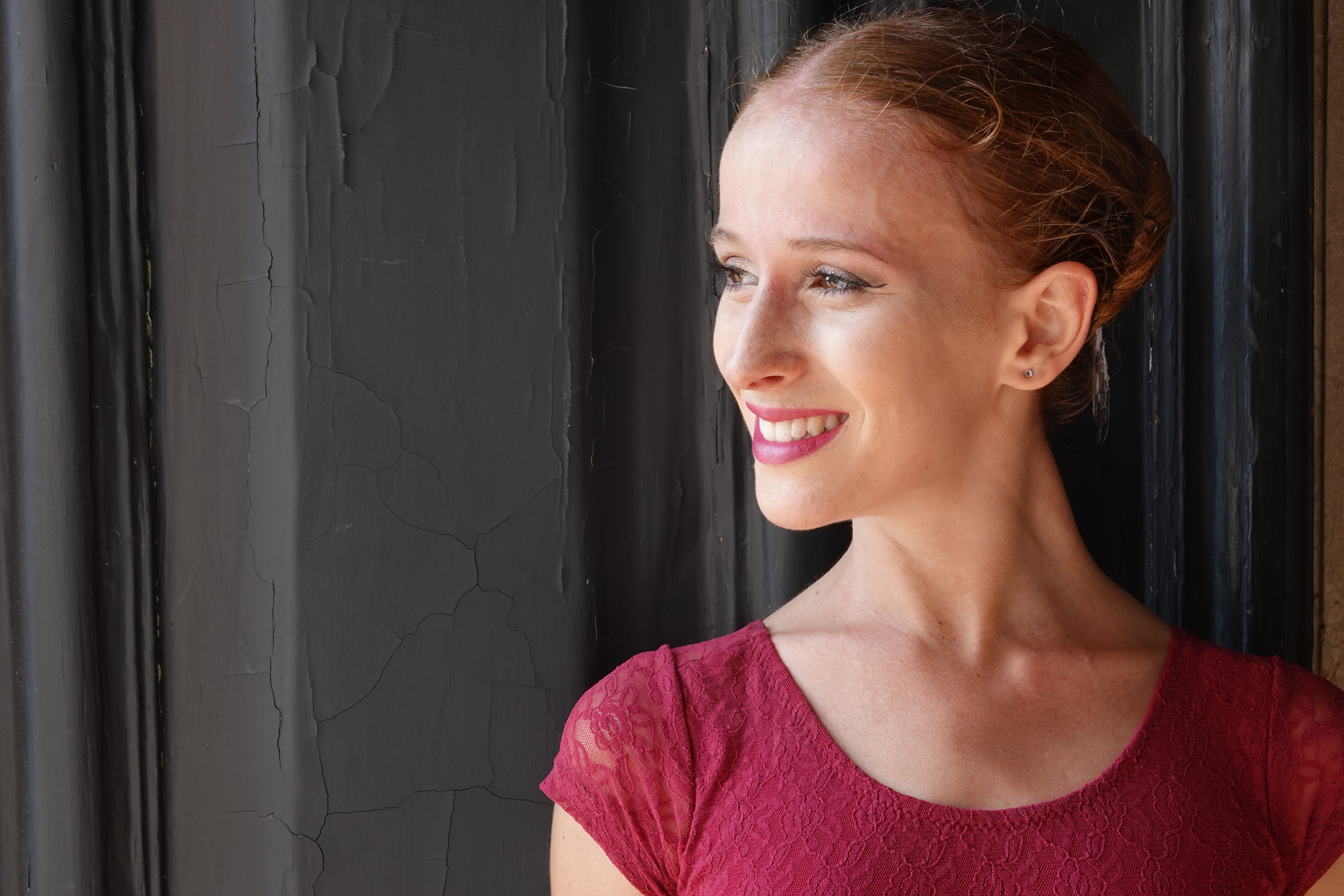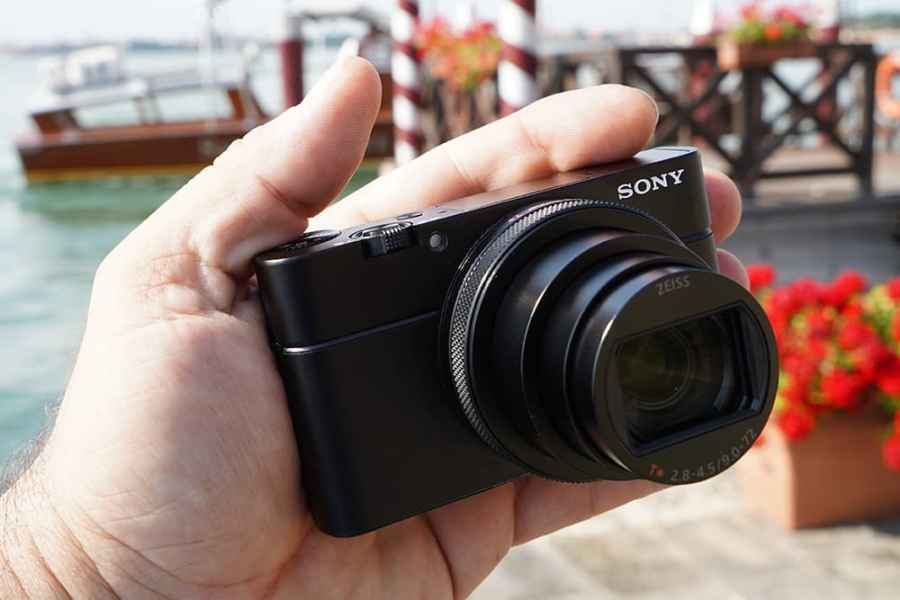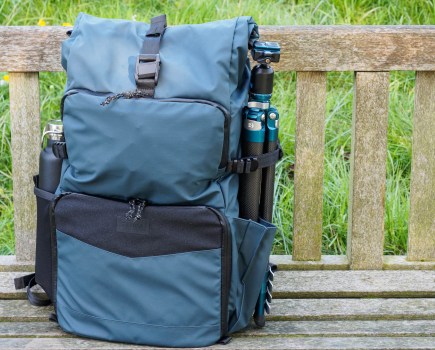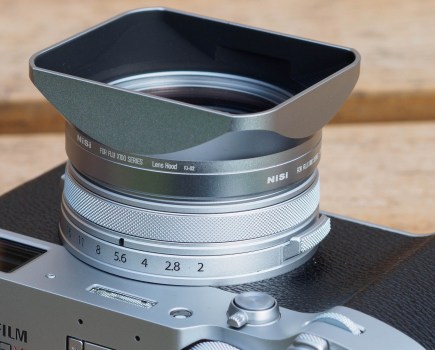Sony RX100 VI at a glance
- RRP £1,150
- 20.1MP BSI-CMOS 1.0-type sensor
- ISO 125-25,600
- 24fps shooting
- 4K video with S-Log3/S-Gamut3
- 4-stop image stabilisation
Sony RX100 VI – key features
20.1MP sensor
The RX100 VI uses the same BSI CMOS sensor and Bionz X processor technology as used in the flagship Alpha 9 and Alpha 7 III to deliver high speed and superior low-light performance
24-200mm f/2.8-4.5 lens
This Zeiss Vario-Sonnar T* features 8 aspherical elements, 4 ‘advanced’ aspherical optics and 2 ED elements for ‘no compromise’ optical performance
Built-in EVF
A 2.35m-dot XGA OLED Tru-Finder display pops up out of the body at the flick of a switch
Touchscreen
A first for the RX100 series, the LCD screen offers touch focus and touch shutter, and can be tilted upwards 180° and downwards 90°
World’s fastest AF
The RX100 VI features 315 on-chip phase-detection points covering 65% of the frame, delivering what Sony claims is the world’s fastest AF for a 1.0in sensor camera.
While successive RX100 models have aspired to be the best large-sensor compact on the market Sony has been happy to let Panasonic own the large-sensor, high-zoom travel compact sector, first with the Lumix DMC-TZ100 and now the DC-TZ200. With the RX100 VI, Sony has planted a size-10 boot in TZ territory, by swapping the 24-70mm lens of previous models for a much larger 24-200mm. This is still a lot shorter than the 24-360mm of the slightly larger TZ200, and the Sony is significantly more expensive, but it does finally give photographers looking for a pocketable, high-quality, long-zoom compact an alternative to the Lumix.
The first thing to note about the new model is that they have effectively tripled the reach of the lens without making the camera significantly bigger. It is 1.8mm deeper but the same in length and width. They have achieved this by making the lens slower – the maximum aperture now runs from f/2.8-4.5, rather than the f/1.8-2.8 of the previous model. While this may disappoint low-light and shallow depth-of-field fans, buyers of this camera will consider the extra reach worth the sacrifice, especially when the options to use a higher ISO and extend the zoom compensate for these drawbacks to some extent.
The lens itself is a newly developed Zeiss Vario-Sonnar T* optic featuring no less than eight aspherical elements, four ‘advanced’ aspherical optics and two ED elements which, Sony claims, offers uncompromising edge-to-edge optical performance throughout the full focal range.
Pocket rocket
But the RX100 VI offers a lot more than just a fancy lens – it is essentially a pocket-sized Alpha. The chipset technology at the heart of the camera is lifted straight from the flagship Alpha 9, albeit scaled down. The one-inch 20.1MP Exmor RS stacked CMOS back-illuminated sensor with Fast Hybrid AF is paired with the Bionz X processor with front-end LSI for around 5x faster performance than conventional sensors, and is the invisible force behind many of the camera’s other impressive selling points. These include what Sony claims is the world’s fastest AF for a 1in sensor camera (0.03sec), burst shooting at 24fps with full AF/AE Tracking and a 233-shot JPEG buffer, Super Slow Motion at 1,000fps, 4K video with full pixel read-out, and an anti-distortion electronic shutter with a blistering top speed of 1/32,000sec.
Focusing has long been an Achilles heel with long-zoom compacts, but Sony has thrown everything it has into fixing this. Its Fast Hybrid AF system combines contrast-detection AF with 315 phase-detect AF points on the sensor, covering 65% of the frame. The High-density Tracking AF clusters autofocus points around the subject for better accuracy with moving subjects, and Sony’s highly effective Eye AF locks onto the human eye and clings on with impressive tenacity.
Touchy-feely
New to the RX100 series is a touchscreen LCD panel which boosts the focusing options further still with the addition of touch focusing (which lets you manually select the focus point by touching the desired area on the screen) and touchpad focus point control. In Touch Shutter mode a picture can also be taken by touching the screen, which is hinged to allow it to be tilted 100° upwards (for selfies) or 90° downwards (for overhead shooting). For those who prefer a viewfinder the camera continues the recent tradition of including a pop-up EVF, which is a 2.35-million-dot XGA OLED Tru-Finder display.
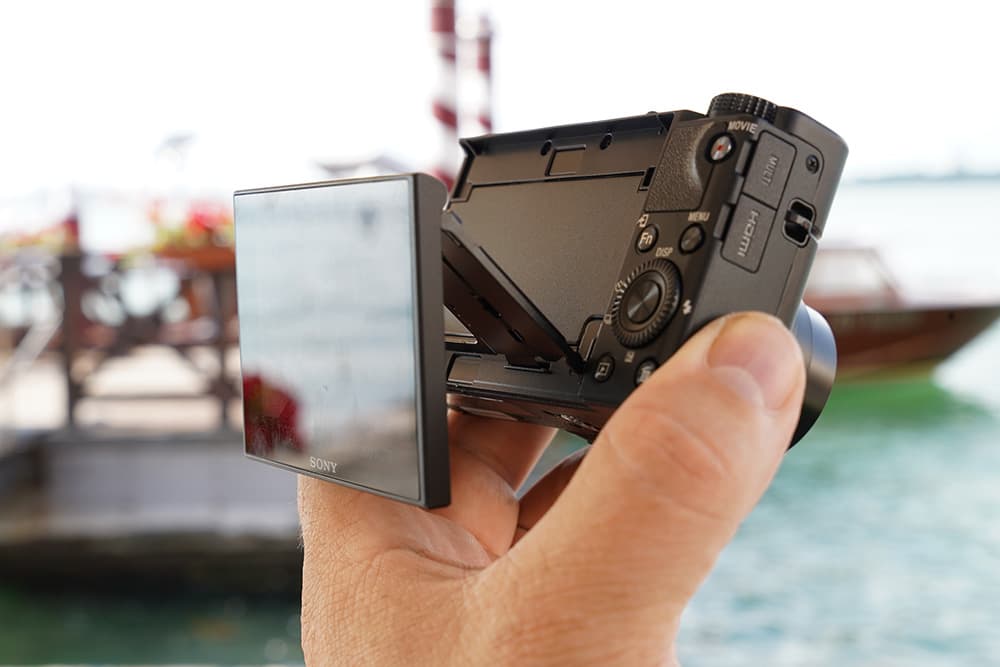
For movie shooters the RX100 VI is equipped with not only 4K recording, as you would expect (and with full pixel readout), but also a range of high-end features that you probably wouldn’t, like S-Log3/S-Gamut3 recording and a new Hybrid Log-Gamma (HLG) picture profile that enables HDR video recording. Super-slow-motion video can also be selected at 250fps, 500fps or 1,000fps. Other features include 5-axis image stabilisation and Wi-Fi connectivity with Sony’s PlayMemories Mobile app.
You might expect a spec sheet this impressive to come at a price and you would not be wrong. The RX100 VI is priced at a hefty £1,150 and will be available from July as a new addition to the range, not a replacement.
Sony RX100 VI – First impressions
The downside of all these cutting-edge features is that remembering where to find them all within the vast menu is akin to trying to memorise the phone book. Luckily the rear Function button gives quick access to your key parameters like ISO, white balance and focus mode, and once set up, your main interactions will be with the top-plate mode dial, the rear input ring and the excellent input collar around the lens mount.
On a day’s shooting in Venice the RX100 VI showed why it is a perfect travel compact. The longer reach of the zoom came into its own for capturing candids, architectural details and views down the canals. While selfie lovers and vloggers will love the 180° vertical tilt of the touchscreen LCD, in the bright sunshine of Venice in June the real hero feature was the pop-up EVF which, although very small, is perfectly usable and has been improved over its predecessor. The camera’s focusing speed and accuracy were such that there was barely a single out-of-focus image from a day’s shooting, which included some fast-moving subjects.
On paper the RX100 VI is an Alpha 7 III with a superzoom lens fitted that has been miniaturised to fit in your pocket. Sounds great! The only negative that stands out from this brief but impressive hands on, and it’s a big one, is the price tag. At around 50% more expensive than the Lumix TZ200, with a shorter zoom, Sony has to hope that it will outperform its established rival comprehensively enough to attract those buyers who can afford the best and are prepared to pay for it.
Sample images:
A selection of sample images can be seen below. Click on any of the images to see the full-resolution file.

The wide-angle end of the RX100’s lens offers an equivalent of 24mm.





